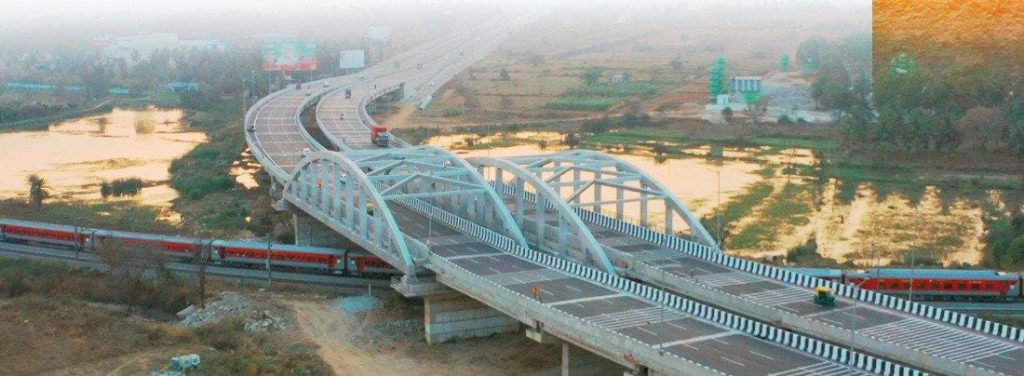Live Classes

Infrastructure in emerging economies has taken on aspects of a magic bullet. It simultaneously works as a national aspiration good, a barometer of national progress, a mechanism for job creation, a vehicle for crowding in private investment, and more. Infrastructure has seemingly become both a demonstration good and a necessity. That is a heavy burden.
The two biggest constraints on infrastructure provision are–
Infrastructure Financing
The traditional approach to financing infrastructure has thus relied on tax revenues or government borrowing. But this introduces elements of a vicious trap: Poorer economies generate less tax revenue, which limits infrastructure investment. This reduces returns to private investment with further spinoffs that affect the growth of the economy and keep the country poor. Attempting to break the cycle by increasing public borrowing domestically tends to crowd out private investment.
Development of infrastructure by Public-Private-Partnership (PPP) model
How does one get around this? One possibility is to incentivise private sector participation by providing targeted subsidies for infrastructure investments. India tried this in the early 2000s by introducing the Public-Private-Partnership (PPP) model. The arrangement entailed the government facilitating acquisitions of land and primary commodities, as well as access to credit from public sector banks for infrastructure projects. Armed with these implicit and explicit subsidies, the private sector got to construct and run the projects for a designated period of time. While a lot of infrastructure did get built under the programme, the PPP model ended in an avalanche of non-performing assets with public sector banks, private sector bankruptcies, accusations of widespread corruption, and a change in government in 2014.
'PPP Model' modified to 'National Champion Model’
In an implicit endorsement of one of the policy priorities of the previous government, the NDA government has also identified infrastructure as a key bottleneck. However, it has modified the PPP approach by assigning the bulk of the infrastructure provisioning for roads, ports, airports, energy, and communications to a few chosen industrial houses. This is the “national champions” model where the government picks a few large conglomerates to implement its development priorities. How does this model get around the infrastructure financing constraint? To incentivise national champions to build the projects identified by the government, one still needs to provide a subsidy to cover the costs. This is similar to the PPP model.
'What's new in the National Champion model?
There are, however, three new aspects to the national champions model–
First, infrastructure projects take a long time before they start generating returns which also tend to be low. To incentivise investment in such projects, these champions need to be given control over existing projects with strong cash flows. This helps the conglomerates to achieve their targeted aggregate returns while keeping negative cash flow projects on their books. Second, the public association of the champions with the government’s national development policy generates a competitive advantage for the champions in getting domestic and foreign contracts. This too guarantees some stable cash flow.
Third, access to some cash-rich projects allows these national champions to borrow from external credit markets by using these entities as collateral. This lowers the cost of finance of the other projects while also freeing up domestic savings for private investment. This is clever and innovative.
What are the problems with the national champion model?
The “national champions” model has four clear problems though–
First, the direct association of these conglomerates with government policies creates the potential for markets and regulators to treat them as too big to fail. This opens the door to market hysteria, delayed discovery of problems, and spillovers of sectoral problems into systemic shocks. This has been brought into sharp relief by the recent troubles of the Adani companies.
Second, the market concentration it encourages can often be bad for efficiency and productivity at the economy-wide level.
Third, the longer it takes for projects to generate large cash flows, the greater will be the need for the state to provide the champions with access to additional cash flows. That risks turning the country into an industrial oligarchy.
Fourth, the optics of an uneven playing field in terms of market access and selective regulatory forbearance can become a significant deterrent for foreign investors, an outcome that India can ill afford.
What is the thinking behind the National Champion model?
A deeper issue is with regard to the proposition that infrastructure provision is the solution to India’s growth aspirations. The prevailing thinking is that once the ports, roads, power, etc. are in place, private investment will follow. If the experience of the infrastructure investment boom of the early 2000s is any guide, this assumption is problematic. The problem in the power sector was not generation but rather the inability of the power distribution companies to recover payments. That is a problem of effective demand.
Conclusion
India is at an inflection point in its development path. It has bet on a development model based on a domestic demand-driven production structure powered by soft and hard infrastructure that is heavily concentrated in a few hands. If it works it will be touted as the next-generation Asian model. Else, it will provide a salutary tale of caution for many generations.
Download pdf to Read More